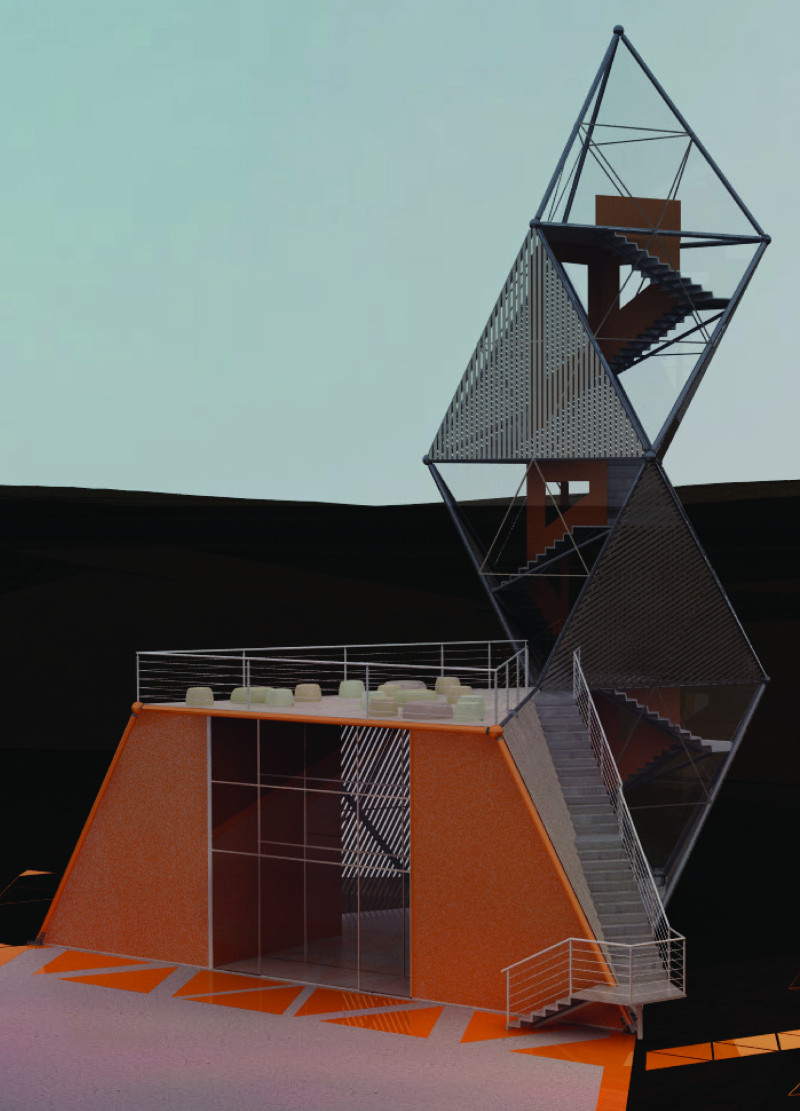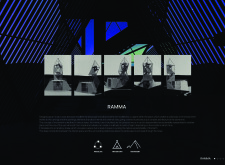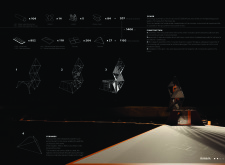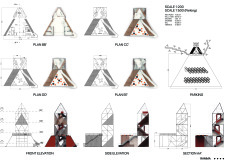5 key facts about this project
The function of RAMMA is multifaceted, serving as a social space, an observation platform, and an area for quiet reflection. The architecture is characterized by its pyramidal shapes, including structures of varying heights that guide visitors through a series of interconnected spaces. These elements serve not only to draw people in but also to facilitate different types of activities, from social gatherings to solitary contemplation.
Unique Design Approaches
One of the key features of RAMMA is its emphasis on modularity, which permits adaptability to various contexts. By incorporating modular design principles, each component of the structure can be reconfigured to suit the needs of its users. This flexibility is complemented by a thoughtful arrangement of pathways and communal areas that encourage interaction among visitors.
The project's orientation maximizes natural light and offers scenic views, creating a seamless connection between indoor and outdoor environments. The integration of transparent materials, such as glass, is not merely aesthetic but also functional, helping to blur the boundaries between spaces while enhancing energy efficiency.
Architectural Details
The construction employs a diverse range of materials, including structural steel for durability, laminated pine for its sustainability, and wood beams that add warmth to the environment. These materials are chosen not only for their practical benefits but also for their environmental considerations, emphasizing the importance of local resources and sustainable practices.
Key architectural details, such as tiered seating arrangements and carefully placed windows, contribute to the overall user experience. The design incorporates subtle transitions between different heights and spaces, enhancing the sensory experience of moving through the structure and engaging with the landscape.
As you explore RAMMA, consider reviewing the architectural plans, sections, and detailed designs to gain a fuller understanding of its innovative concepts and construction methodologies.


























